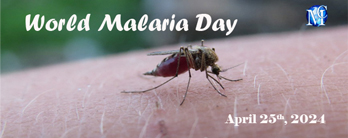Journal of
eISSN: 2373-6453


The recent outbreak of infections with Ebola virus (EV) in West Africa caused already over 4000 deaths and is rapidly increasing. In the interim while there are no effective drugs against this lethal virus it would be reasonable to explore the wider use of passive immunotherapy (PIT) based on the reported study of Mupapa et al.1 during the 1995 Ebola outbreak in the Democratic Republic of Congo. During this epidemic blood was collected from 5 convalescent patients who had anti-EV antibodies and then used to transfuse 8 seriously ill patients who ranged in age 12-54. The treated patients had severe asthenia, four had also hemorrhagic manifestation and two became comatose. Each individual received only a single infusion: seven of the 8 recovered. The overall fatality rate at the same hospital was 80% (249/311). In the absence of any widely available alternative to reduce the high mortality rate, treatment based on Mupapa’s observation deserves to be exploited.
Plasma from people who recovered from the infection can be readily collected: and such anti-EV serum could be used to treat not only the advanced patients but also virus-infected pre symptomatic individuals during the incubation period. Hyper immune serum can lead to the recovery of terminal patients, if given earlier it might prevent the development of the disease by reducing the viral load and assisting the body’s immune system to cope with the infection. Furthermore, if the observation of Mupapa et al.2 that a single infusion is correct, there may be a place for therapeutic immune anti sera prepared in large animals, like the anti-diphtheria and anti-tetanus used during the early part of last century. Early studies with equine immunoglobulin have already shown some activity in suppressing EV-viremia and delaying disease onset and death in non human primates.2
While the development of human monoclonal blocking antibodies to EV would be the ideal treatment until effective antiviral drugs are readily available for the thousands infected, PIT is likely to be the only beneficial treatment that can be offered without delay. Mupapa et al.2 study was published in 1999 and therefore it will not be unreasonable to assume that the 7 patients who recovered following a single PIT remained well and EV free. In 1985 we initiated PIT for AIDS patients in Cambridge using plasma from healthy HIV infected individuals which contain high levels of ant-HIV antibodies.3 Although we were able to demonstrate that extracellular HIV was neutralized and that there was a clinical benefit, when the monthly transfusions were stopped the patients deteriorated and died.4,5 The reason being that HIV is a retrovirus, namely its proviral DNA maintain a lifelong intracellular infection. In contrast EV infected individuals who recover appear to remain virus free. Since EV is not an airborne infection and those who recover are virus free, it should be possible to limit the spread of the virus. The addition of interferon might further improve the prognosis of infected individuals.
None.
None.

© . This is an open access article distributed under the terms of the, which permits unrestricted use, distribution, and build upon your work non-commercially.
 World Malaria Day, observed annually on April 25SUP>th. The purpose of this day is to raise awareness about the global struggle to combat malaria, highlighting the need for continued research, prevention, and treatment strategies to eradicate this deadly disease. So, it is an opportunity to all the researchers to submit your interesting papers on raising the approachability on modern vaccine development, advances in disease control, prevention and eradication and the submissions received till April 25th, 2024 will be offered a best discount of 30% for publication in Journal of Human Virology & Retro virology.
World Malaria Day, observed annually on April 25SUP>th. The purpose of this day is to raise awareness about the global struggle to combat malaria, highlighting the need for continued research, prevention, and treatment strategies to eradicate this deadly disease. So, it is an opportunity to all the researchers to submit your interesting papers on raising the approachability on modern vaccine development, advances in disease control, prevention and eradication and the submissions received till April 25th, 2024 will be offered a best discount of 30% for publication in Journal of Human Virology & Retro virology.